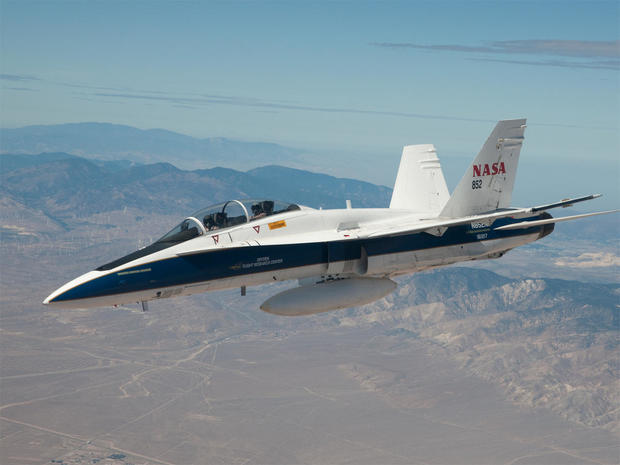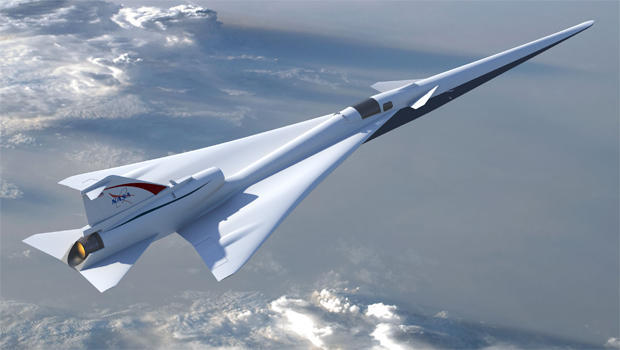Bringing back supersonic flight, with quieter sonic booms
This piece originally aired Oct. 16, 2017.
This past weekend, at Edwards Air Force Base in California, the U.S. Air Force celebrated the 70th anniversary of Captain Chuck Yeager becoming the first pilot to fly faster than the speed of sound. Yeager, now 94, was there to commemorate the event.
The only commercial passenger plane that flew faster than sound on a regular basis was the now-retired Concorde back in the 1970s, '80s and '90s. But the Concorde was only allowed to go that fast over the ocean, because supersonic flight creates a disturbing side effect -- a loud explosion of energy called a sonic boom.
Today, NASA engineers are working to lower the boom, so airlines can quietly hit those speeds and cut travel times for everyone in half -- seven decades after Yeager's historic achievement.
Bob Cardenas flew the B-29 bomber that dropped Chuck Yeager's X-1 out of the sky, and into the history books. "When I dropped him, that was October 14, 1947, I heard that sonic boom, and we knew right there that he had brought in a new Air Force, a new supersonic Air Force.
"Once we could go beyond the speed of sound," Cardenas told CBS News correspondent Jeff Glor, "it was the gateway to space."
That momentous event 70 years ago did lead to space travel, but not supersonic commercial air travel, mostly because of a series of loud booms -- caused when a supersonic plane creates audio shockwaves that sound like bombs, shake the earth, and even break windows.
Supersonic flight over land was banned.
NASA aerospace engineer Ed Haering is trying to fix that. He and his team at the Armstrong Flight Research Center in California are working to lower the blast force and cacophonous sound of sonic booms.
"We showed that we could reshape the front of the plane and make a quieter boom on the ground," Haering said.
They've designed an experimental plane called a Low Boom Flight Demonstrator, to be built within four years. The ultimate goal: make supersonic commercial flight a reality for everyone.
A New York-to-Los Angeles flight that today takes five to six hours, could be made in three.
Until the demonstrator is done, it falls to NASA test pilots like Nils Larson to create low booms with today's aircraft. To do that, Larson has to execute a complicated series of aeronautic contortions with current jets, like an F-18 Hornet.
"We're gonna roll inverted, pull down to 53-degree nose low, roll out, and then we're gonna start a dive pullout to about three-and-a-half Gs. It's not that hard," Larson laughed.
Down on the ground, Haering and his microphones are listening and collecting data, while Larson, joined by Glor, is on a mission to see how low the sonic boom can go.
In their first run, the plane goes to an altitude of about 35,000 feet, and executed a "normal" boom.
But to execute the "low boom" maneuver, Larson first must climb to 49,000 feet.
Haering's initial data shows about an 85-percent reduction in the power of the boom.
Larson said of Yeager's 1947 flight, "Back then, it was obviously a huge deal to go supersonic. Now we do it daily. I'm still part of that team going out there doing supersonic research. So that's pretty cool!"
The plan is to use flights like this to show the public what low sonic booms sound like and get feedback.
NASA will use that when its newly-designed experimental aircraft starts flying in a few years -- and unlike Glor's flight, that plane won't have to do aerobatics in the sky. Thanks to its unique shape, it will create low booms simply by flying level -- and very, very fast.






